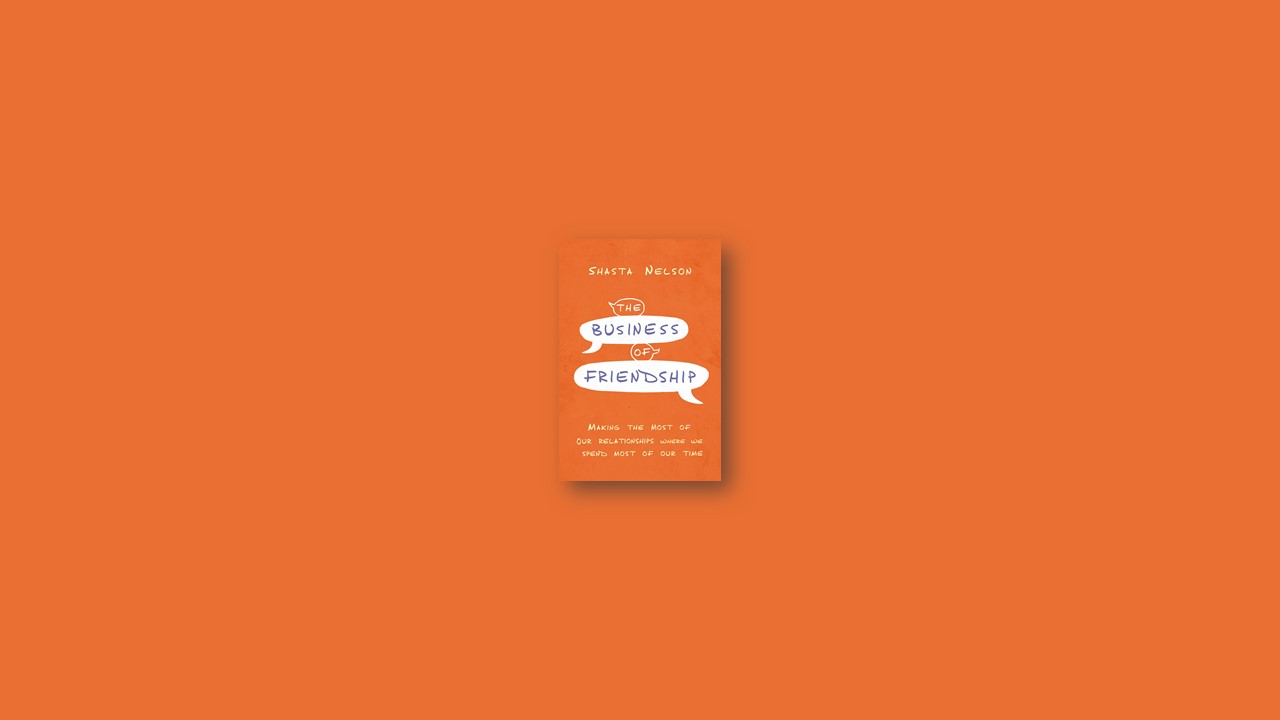The Three Relationship Requirements
In comparing the various factors that social scientists are studying when they look at how we create bonds, whom we confide in, whom we call a best friend, what makes a healthy marriage, what builds trust, or what makes up the perfect team, three factors always emerge. Any definition we develop needs to be built on the back of these three nonnegotiables:
- Positivity basically means positive feelings. Positivity is the result we feel in healthy relationships as we are left feeling good from such things as pride, awe, empathy, kindness, acts of service, gratitude, laughter, and affirmation. Friendship is absolutely about two people raising the emotional happiness of each other.
- Consistency basically means consistent interaction. Consistency is when we log the hours and devote the time to each other; it’s how we build a shared history and make memories; it’s the repetition or regularity that develops patterns, rituals, and expectations in our relationship. It’s from this consistent time that we come to predict consistent behaviors that lead to us feeling like we can rely on each other.
- Vulnerability basically means meaningful sharing. Vulnerability is the sharing and revealing of who we are; it’s two people choosing to get to know each other; it’s allowing someone else to hear our ideas, know our opinions, validate our feelings, and listen to our experiences. Vulnerability is what leads to us ultimately feeling seen and known by another, which is required for feeling loved or respected.
Like a formula, a healthy relationship must have all three: Positivity, Consistency, and Vulnerability.
Friendship = Positivity + Consistency + Vulnerability
How to Develop Relationships at Work That Are Positive
The goal of Positivity is to leave both people feeling good about having interacted so that we might want to continue to practice Consistency and Vulnerability with each other. Research has shown that, regardless of our culture or context, we judge a new person on two primary factors: warmth and competency.
But guess which one comes first? Warmth before competency! Throughout history, our survival was dependent first upon our ability to decide who was an ally or enemy. We are wired to instantly assess whether someone is warm, nice, and friendly. The second factor, competency, builds over time as we assess the person’s skills and effectiveness, which helps us then determine how helpful as an ally, or dangerous as an enemy, the person could prove to be.
Before we can build any strong collaboration or relationship with others—we have to feel the warmth and believe that we each want to be allies. It’s our job to give this, not just look to receive it. In fact, the healthiest among us will be quick to offer it, whether we get it in return or not. We know that it’s good business, and good humanity, to be kind everywhere we go.
To be clear what Positivity is, it’s also important to be clear what it isn’t. Positivity does not mean that we need to be a more positive person or say only positive things. It doesn’t mean trying to cheer people up, pretending to like everything, or saying yes to everyone. It doesn’t stipulate that we don’t go through hard things, struggle with depression, or get angry. It doesn’t ask us to put on a fake brave face, force us to smile insincerely, or give us an excuse to avoid tough conversations. It doesn’t mean we can’t vent, whine, or complain. It doesn’t indicate that we don’t work hard, have deadlines, or vehemently disagree with each other.
What Positivity does mean is that, over time and along the way, we feel positive emotions toward each other. Whether we’re measuring Positivity in our own life, in a specific relationship, or on our team—what we’re looking for are more positive emotions than negative emotions.
THREE WAYS TO INCREASE POSITIVITY
- Start with Warmth. Remember that those around us judge us by how they feel in our presence. At minimum: acknowledge people when you/they arrive, make eye contact, say their name, smile, and show some curiosity about their lives.
- Increase Our Appreciation. Thank them when they do something for us, compliment them on things you notice, and congratulate them for accomplishments. Be known as someone who is generous with your recognition of others—especially when distracted, jealous, or drained.
- Respond with Empathy. If they share good news, cheer with them; if they share frustration, groan a little with them; if they share excitement, express hope with them. Try not to let anyone express something that goes unvalidated. Even just a “thank you for sharing that with me” or a “I totally get it” will reduce the chances of them regretting their openness and will increase the chances for future connection.
How to Develop Relationships at Work That Are Consistent
The goal of Consistency is to increase trust so that we feel safe with each other, which we do incrementally as we increase Positivity and Vulnerability. We need to feel as though we can rely on each other, which happens as we get to know each other and build history.
But just as friendship isn’t all or nothing, neither is trust. We might not confide in a colleague because we don’t know if we trust her not to use this personal information against us at some point, but that doesn’t mean we don’t trust her to do her job. We might not trust that a new customer will eventually join our loyalty program, but we can feel confident that he left our store or restaurant happy. We might not trust that our supervisor thinks we’re ready for a promotion, but we can still feel that she appreciates our work in our current role.
The extent of what we can rely on in someone grows only as our experience with them increases. In our nonwork life we understand that if we want to spend time with someone we have to initiate it, because the chances are low that we’ll simply “run into each other.” But at work, for good and for bad, this is how most of our relationships start. It’s good in that it allows us to build connections without having to extend invitations to near strangers to get together, schedule extra events into our full calendars, or start conversations without knowing a thing about the other.
By both of us being in the same company, industry, or workplace, we already have conversation starters, opportunities to see each other, and a reason to connect. Where it can be bad, or limiting, is when we don’t understand the role this Consistency has in our feeling close. Once we understand how we can increase it, or limit it, we can start to see how we can strengthen (or weaken) any relationship we want.
THREE WAYS TO INCREASE CONSISTENCY
- Be Proactive about Proximity. Purposely sit in different spots in meetings to ensure you’re bonding with different people. Volunteer on projects and teams with people whom you’d like to know better. Attend social events. Basically, keep putting yourself where people are in small groups and you will get to know one another.
- Say Yes to Variety. Instead of begrudgingly participating in off-site meetings, new activities, or social functions—recognize them as the bonding activity that they can be and add your energy to the mix. Or initiate it. Invite the team over for a barbecue, offer up your living room to watch a season finale everyone’s been talking about, or invite someone out to lunch.
- Value Reliable over Ideal. Others will trust us based on what we do deliver, not on what we intended to deliver. It’s better to respond with a quick email than to wait for time to write the perfect email . . . only to then forget. It’s better to ask clarification questions now than to try to wow them by reading their minds and failing. It’s better to consistently be on time than try to make up for it with lots of jokes. It’s better to give a coworker five minutes of our attention now than to keep waiting for “when we both have time.” Trust is built on tiny little consistent actions that build up over time.
How to Develop Relationships at Work That Are Vulnerable
The goal of Vulnerability is to get to know each other, which we do incrementally as we practice Consistency and Positivity with someone. When we’re asked what matters most to us in a relationship, most of us rank honesty at, or very near, the top. We want to believe that people are showing us who they really are, and we deeply want to believe we can do the same, without fear of judgment, exclusion, or punishment.
But, Vulnerability, perhaps more than Consistency or Positivity, is the one requirement our culture struggles with the most when it comes to “how much?” How honest should we be? How expressed can we be? How much of “us” can we show? How many of the details can we whisper?
The most important thing is to keep in mind that there is a spectrum, a range of what’s appropriate to share and who needs to know what. We must work to find a baseline on which we can try to show up with as much genuine interest as any specific context calls for when interacting with most people. Then, with those who matter to us, we can hopefully move those relationships up as we increase Vulnerability in conjunction with Consistency and Positivity.
THREE WAYS TO INCREASE VULNERABILITY
- Engage in “Small Talk” with New People. Few of us love trying to make conversation with people we don’t know well, and yet it’s the currency of connecting. It’ll be hard to get to meaningful stuff if we have nothing to build upon. So have a couple questions in your repertoire: an easy one: “So what did you do this last weekend?” a favorite one: “What got you into this profession?” as also, as perfectly suggested in an op-ed titled “The Awkward but Essential Art of Office Chitchat,” practice turning the “how are you” question into a conversation by sharing why you’re good: “I’m good. I just started a book/podcast/TV show and I’m really enjoying it. Have you heard of it?” Or mention something office-related, a shared common experience: “I’m good. They restocked the cold brew in the kitchen and it’s so strong. Have you tried it?”8
- Clarify What We Need. Let’s tell someone what would be more meaningful to us or what behaviors we’d prefer. Instead of stewing, complaining, or venting, think of a situation in which we can try to practice telling someone what would feel better to us going forward.
- Focus on Highlights and Lowlights for Deepening the Relationship. My favorite question with friends is to ask them to share one current success in their life and one challenge. This week at lunch, ask a friend to share how she’d answer that question!


